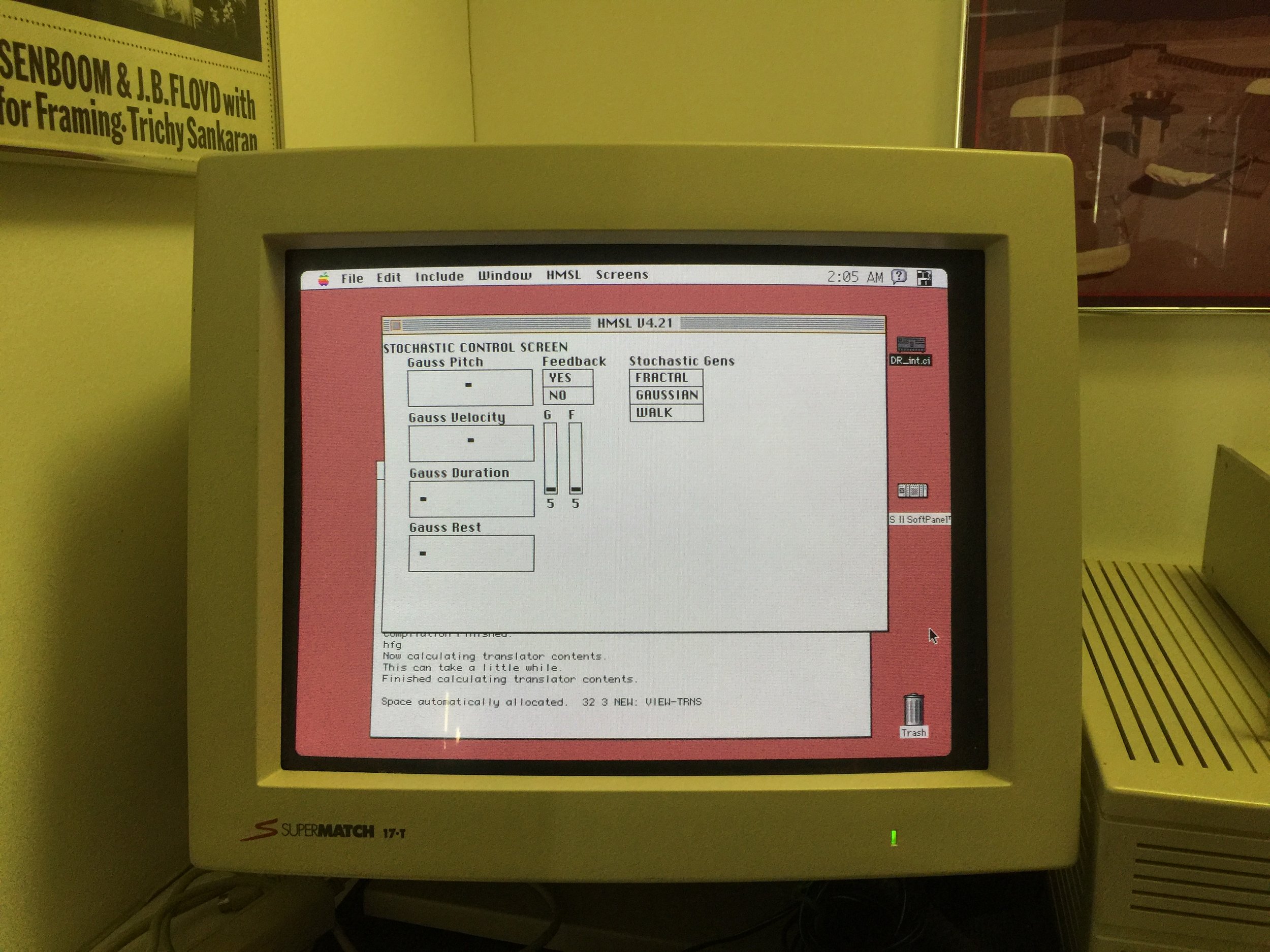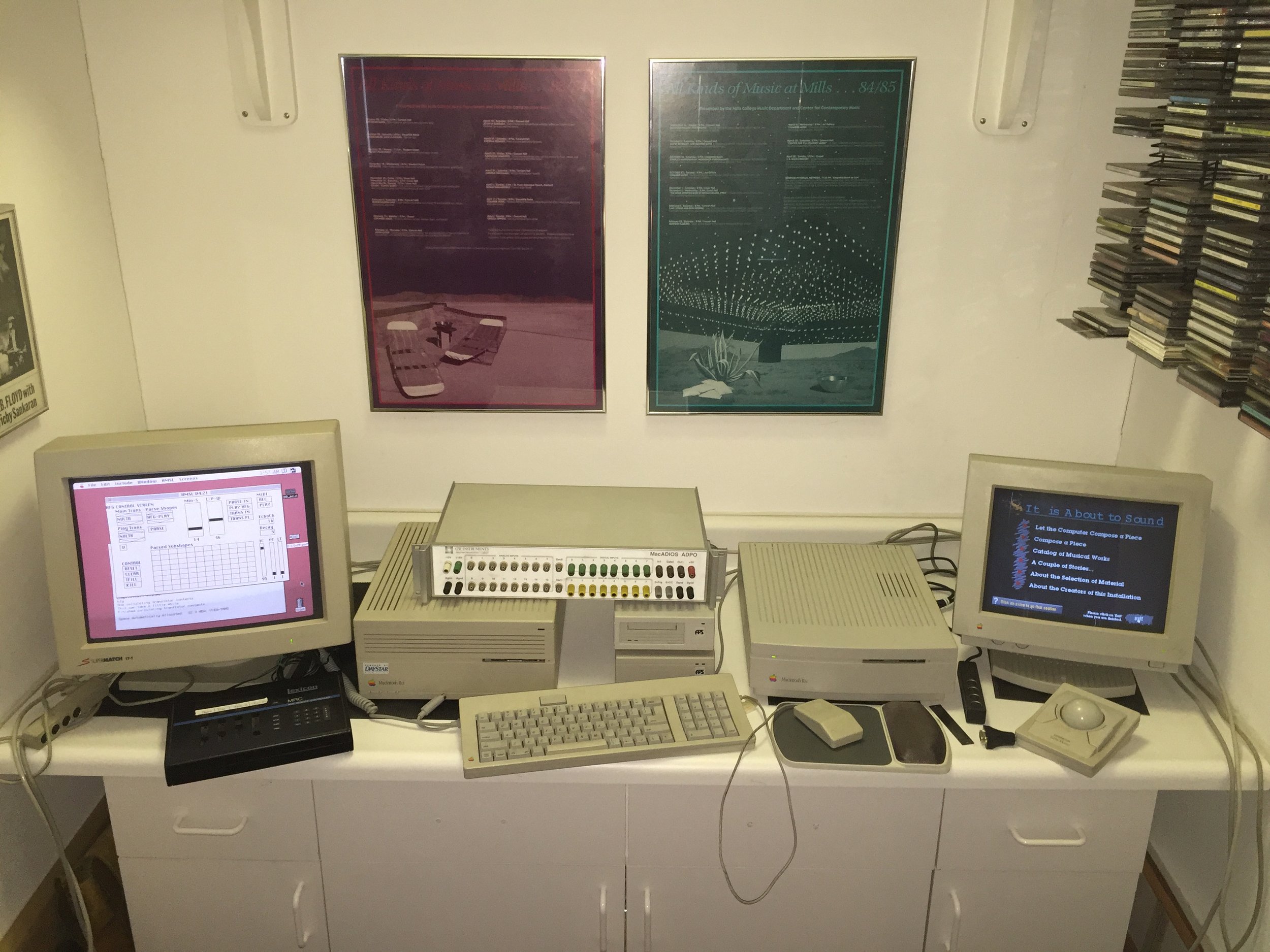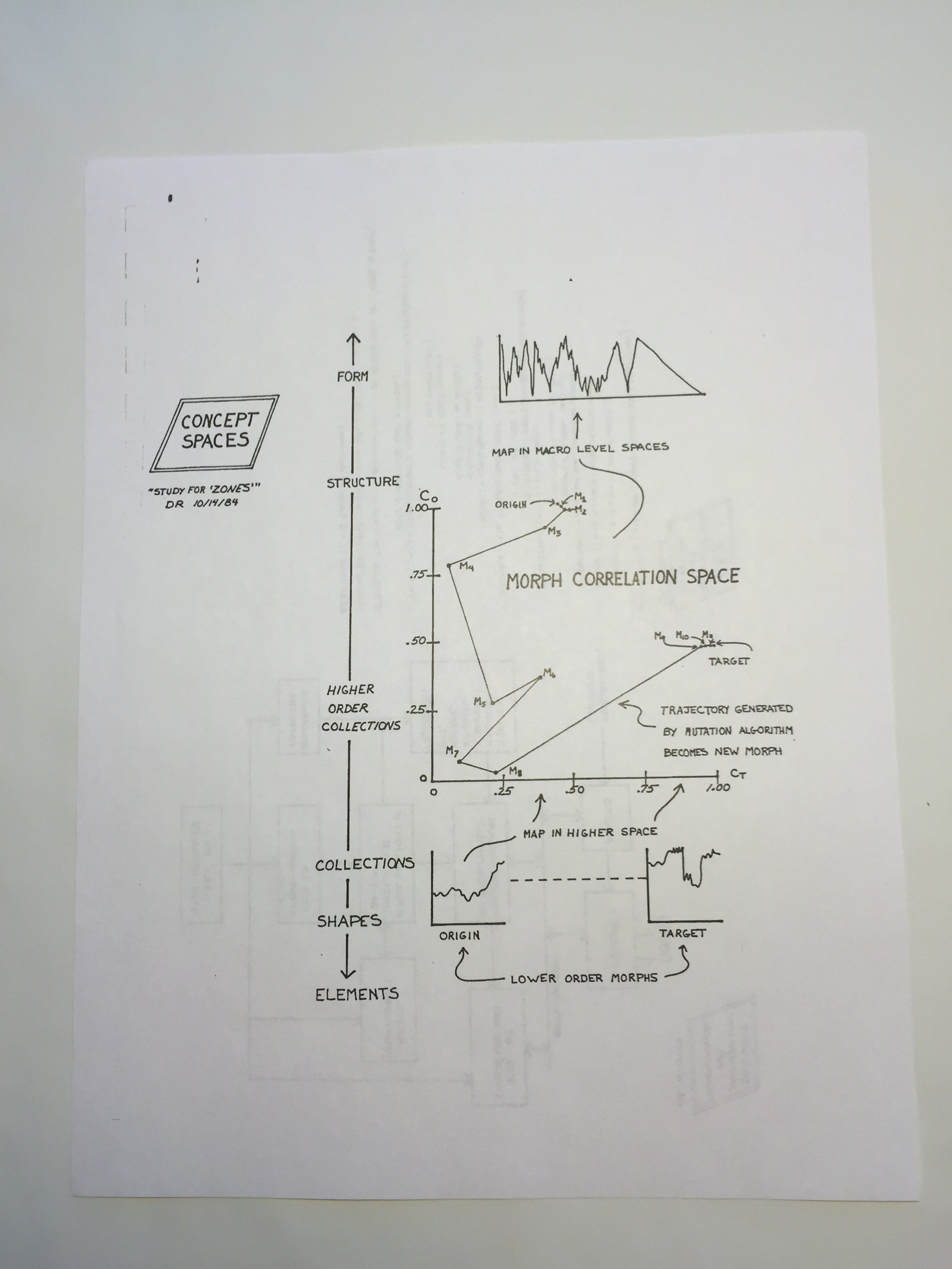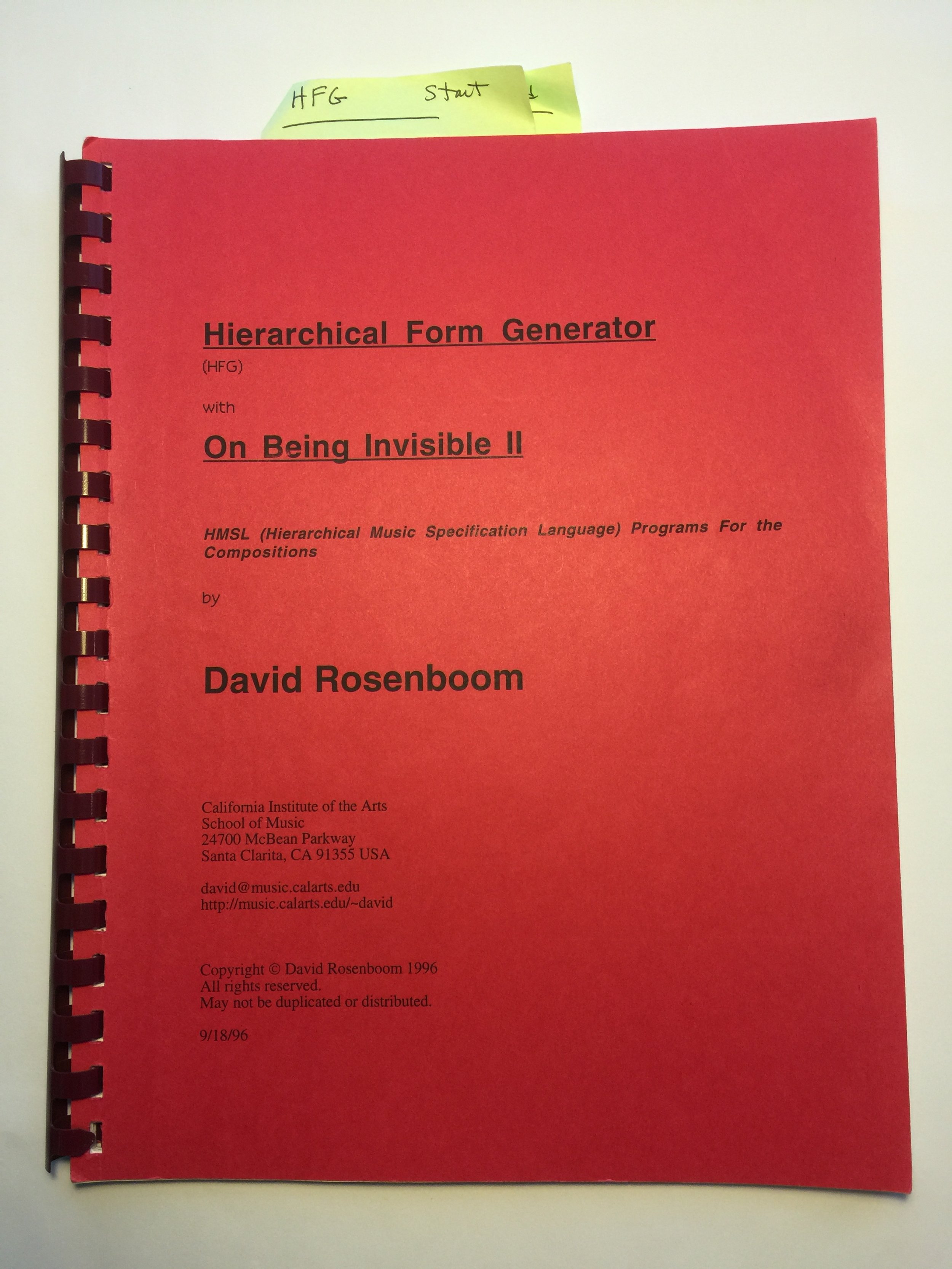1980s-1990s, HMSL (Hierarchical Music Specification Language). Experimental computer music language developed by Phil Burk, Larry Polansky, and David Rosenboom at the Mills College Center For Contemporary Music. Rosenboom first programmed an early template of what became a plan for HMSL data structures using Meta, meta-compilation software from Marinchip Systems, to use with the Touché digital keyboard instrument from Buchla & Associates. He used that in composing his Zones of Influence, concert-length composition for percussion soloist and live computer music system. The first releasable version of HMSL was developed in 1983 along with Burk and Polansky to run on the the Commodore Amiga personal computer, which was extended to run on the first Apple Macintosh computer in1985. These versions worked with external MIDI interfaces. The source code came along with the software, allowing users to customize and improve HMSL, along with a library of useful functions.
Over the years, the original designers and a community of software users developed spin-offs of the program. Phil Burk developed HMSL-DSP, a version that could implement real-time digital synthesis and signal processing with Sound Designer digital interface cards made for computers with Nubus interface capability. Robert Marsanyi, along with Phil Burk, developed a graphical interface extension, called Wires. In1990 David Rosenboom developed his HFG (Hierarchical Form Generator) written with HMSL, and in the early 2000s, Nick Didkovsky released Java Music Specification Language (JMSL), that was inspired by HMSL.
The following are very early video examples of Rosenboom using HMSL in performance and discussing the musical concepts involved:
Improvisation with HMSL - Systems of Judgement, Western Front (1990)
Improvisation with HMSL and Hierarchical Form Generator (HFG), Western Front (1991)
For a long time thereafter, HMSL continued to inspire a wide community of users to develop an ever-expanding kit of tools for real-time algorithmic composition and performance in experimental music.
HMSL Shape Editor screen running on a Macintosh IIci computer.
HMSL Stochastic Control Screen
Left: Macintosh IIci running HFG with Rosenboom’s data acquisition hardware used to collect EEG signals for his self-organizing brainwave opera, On Being Invisible II (Hypatia Speaks to Jefferson in a Dream),1994. Right: Macintosh IIsi running It’s About to . . . Sound, developed by Rosenboom in collaboration with Mark Coniglio and Stephen “Lucky” Mosco for Rollyholyover…A Circus, an interactive exhibition at Museum of Contemporary Art, Los Angeles, celebrating the work of John Cage and selected other artists and composers, 1992.
Rosenboom’s early template for HMSL running on the Touché for his Zones of Influence, 1984, on display at Whitechaple Gallery, London, 2014
HMSL’s Software Web, 1984, on display at Whitechaple Gallery, London, 2014
Diagram of “Concept Spaces” for Rosenboom’s Zones of Influence
“Node/Tendency Graph”—(ways of establishing tendencies of processes to follow or initiate each other in HMSL)—, 1984, on display at Whitechaple Gallery, London, 2014
Early diagram for HMSL’s components, 1984, on display at Whitechaple Gallery, London, 2014
Morph Editing—(editing morphological shapes to be applied to compositional parameters)—in HMSL, 1984, on display at Whitechaple Gallery, London, 2014.
Code sourcebook for Rosenboom’s Hierarchical Form Generator (HFG) and his composition On Being Invisible II (Hypatia Speaks to Jefferson in a Dream), 1996
HMSL was written about in numerous publications highlighting new directions in computer music.
Rosenboom lecturing at the University of Illinois about “Concept Spaces” and HMSL., 2022
Chart of systems design for computer music tools, including HMSL, in the Mills College Center for Contemporary Music, 1980s












